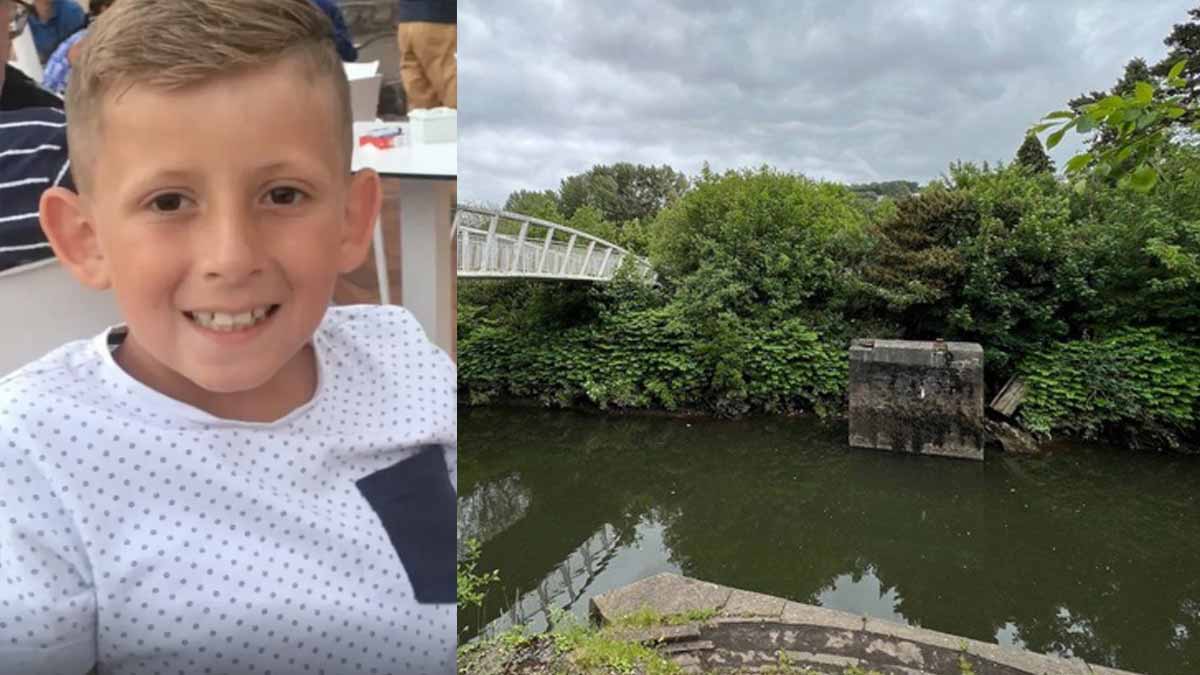A carefree day by the river turned in an instant. A teenager slipped from play to peril as water hid what eyes could not see. While swimming, a small choice met a larger force, and the calm surface masked a deadly snag. Panic spread fast, voices rose, and seconds stretched. On the bank, friends searched the ripples; in the channel, the current kept its quiet pull. What followed was a rush of calls, a search across pools, and answers no one wanted.
From a playful dip to a sudden alarm
They arrived like many kids do on warm days, eager for a simple splash. Laughter carried over the flow, then halted. A witness later remembered a voice that cut the breeze : “Have you seen my friend? He’s gone under the water and not come up.” Fear replaced noise as people scanned the river surface, hoping for movement.
Police said the boy had “got into difficulty,” words that can sound vague until the bank goes silent. Here, difficulty meant a hidden hold below the surface that would not let go. The friend told authorities that a foot seemed stuck even as the current pressed on. He pointed, gestured, and waited for help, because seconds were heavy.
During those minutes, the scene shifted from play to response. Calls went out. Bystanders marked likely spots. While swimming sounds simple, water turns complex when debris, depth, and flow line up. On this afternoon, those elements lined up too well, and hope leaned on rescue crews.
Hidden dangers during swimming in fast, cold rivers
Rivers keep secrets. Branches settle, roots twist, and trees wedge against stone. These snags trap shoes, laces, or a bare foot in an instant. The surface can seem calm, but the bed holds structure that grips. So a slip becomes a lock, and a lock becomes a fight against pressure.
In this case, responders later described a tree on the bottom holding the boy. The current did not free him; it pinned him. Even a strong swimmer cannot pull against leverage and wood. When limbs meet branches at the wrong angle, the body loses options. It is not about strength then, but position, time, and luck.
Cold adds another layer. Muscles slow. Breathing shortens. Decision-making blurs. A small delay turns large. Cold shock can arrive before the mind catches up, and that shock drains energy. With a foot jammed and water pushing, the odds fall fast. Nearby, people shout, throw lines, and point, while the channel keeps its pattern.
The search on the water and what rescuers found
The search became frantic. Crews scanned the surface, checked eddies, and marked the center reach, where flow converges. After tense minutes, they located the body near the middle of the river, where visibility was poor. A fire team member later said they found “a tree on the bottom of the river pinning the boy under it.”
Recovery is careful work. Teams move slow so they do not stir silt or shift branches that could make things worse. They stabilize, free, and bring to shore with as much dignity as the moment allows. Each action has a sequence; each sequence has risk. People wait, hold their breath, and watch hands move in practiced order.
Later reports confirmed what the scene suggested. The cause of death was consistent with drowning. Cold water likely triggered shock, which robs air and strength at once. Even practiced swimming skills struggle when cold saps control. In the aftermath, questions turned to how, where, and why the river kept its hold that day.
Dates, places, and what the inquest clarified
The timeline is stark. On May 24, 2022, thirteen-year-old Kane Edwards went to the River Tawe in Morriston, Swansea, in Wales, and did not return. According to the BBC, an inquest held on Monday, Aug. 18, examined events and evidence from that afternoon. Police, cited by The Independent, said the boy had “got into difficulty.”
Emergency services faced a crucial problem first: where exactly to look. Teams searched three different pools because location was unclear. They checked signs on the surface and hints from the bank. According to testimony, the river’s center held the answer, beneath silt and branches. There, a submerged tree held Kane, unseen yet absolute.
Evidence aligned: a foot likely jammed, a current that pressed, and cold that shocked. Officials noted the water temperature as a factor that narrowed response time. The mechanism was simple and unforgiving. Even with help close by, the mix of flow, snags, and cold outpaced any plan.
Family and school tributes after the swimming tragedy
Loss rippled through home and school. Family called Kane “a lovely boy,” words that say much in few syllables. His cousin, Ffion McCormick-Edwards, shared how he was “very sporty, very lively and really close to his mother and family.” She spoke of a child who filled rooms with motion and light.
She also said he was “really nice, easy going and lovely,” someone who could talk to anyone. “He meant everything to his family, especially his brothers. He was so full of life he was the entertainment of the family.” These lines frame the gap left behind, because a river does not just take time; it takes presence.
At school, headteacher Martin Franklin said the community was “devastated.” The tone was plain, the message clear: grief sat with staff, friends, and teachers. Halls remember laughter. Fields remember motion. In words shared publicly, people held the family close.
What this river story asks of every young friend
A quiet bank can hide sharp risk, and a quick dip can turn. This story holds a hard lesson about cold water, debris, and the trap no one sees until it is too late. It asks for care, for throwlines on busy stretches, and for signs where kids gather to swimming on warm days. It also asks for patience near flow, and for a habit of stopping to scan the water before feet leave the stones.
